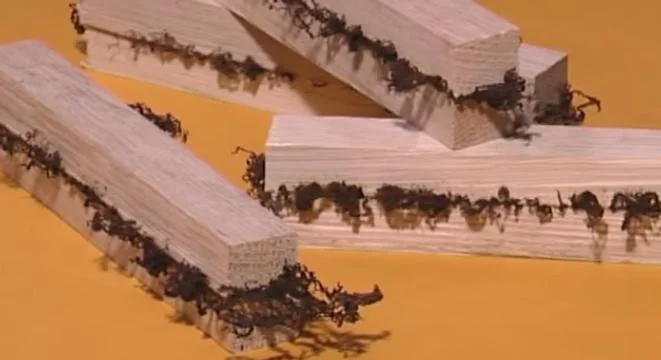Inspired by the self-healing process of trees Manufract has created a new and unique furniture line. If a tree gets injured, it will naturally release resin to close the wound. The natural concept of wound healing is used for the manufacturing process of these products. Broken pieces of wood are form filled with an eco-resin to get the full, final shape. Each piece is carefully selected from broken hardwood stock. It is then manually crafted and hand polished.
Read MoreMaroubra Residence by Those Architects
Originally owned by the client’s grandmother, the residence in the quiet Sydney beach side suburb of Maroubra has been re-designed by those architects to facilitate the lifestyle of the young family who resides today. The architects discussed with the clients about how they wanted to use the house and they came to a conclusion. The property needed to be flexible, robust and light. It had to be suitable for a young family, and remain adaptable as their family grows, while also providing them the ability to entertain family and friends. Being surrounded by natural light and fresh air was another key component of the brief.
To facilitate the requirements, strategies such as having the living areas brought down to be at the same level with the outdoors, a new courtyard between the existing house and a new addition for more sunlight, and the addition of a galley style kitchen that connects into the rear of the old house and looks into the courtyard outside. The kitchen is linked to the living and dining areas of the home through a concrete bench that extends the full length of the living space. The bench provides out-of-sight storage for AV equipment, books, toys and firewood below as well as providing additional seating for the living area.
Read MoreCustom Salvaged Knives by Bloodroot Blades
Meet the science nerds in Georgia who re-forge abandoned scrap metal into blades with a multi-year waiting list. For more on their process click here:
http://www.bloomberg.com/news/videos/2015-11-02/made-bloodroot-blades-forges-knives-from-scrap-metal
Read MoreTsumiki by Kengo Kuma
In collaboration with Ryuichi Sakamoto’s forest conservation organization More Trees, architect Kengo Kuma has designed a set of triangular-shaped modular pieces. Called Tsumiki, a name that means ‘wooden blocks’ in Japanese, the individual components can be stacked and assembled in a variety of ways, allowing the user to create original sculptures.
Tsumiki will soon be available to buy in Japan.
Read MoreMagnetic Hexagon Coasters by I Like To Make Stuff
A how-to video showing some hexagon shaped coasters that snap together using magnets.
Read MoreThe Ultimate Wood Joint Visual Reference Guide
In the thousands of years since, craftspeople have developed an almost absurd variety of joints, some of which you learned in the shop at school, some of which you've never heard of, and that one that you can always see in your head but have forgotten the name of. To help you remember for the next time you're building something out of wood, or to give you some alternatives for any current designs you're working on, here are some visual guides:
Read MoreReinterpreted Pencil by Evgeny Barkov
Designers Luka Or and Keren Tomer asked their 3rd-year industrial design students at the HIT university in Israel, to re-think the idea of a pencil, giving it a new sense and purpose. Student Evgeny Barkov took inspiration from prehistoric carving tools to create these wood and polymer pencils. The top side can be used to carve into surfaces.
Read MoreSpiraling Jewelry Organizer by Hitonari
This carefully crafted organizer for jewelry and accessories asked three questions in the design process: Can it be accessible from and angle? Can it be easy to move and transport? Can it be durable while achieving the first two objectives?
While the form can be compact, solid oak trays can be rotated giving the piece a certain adaptive and sculptural quality. A solid base keeps the piece bottom-heavy so there is no need to worry about it tipping or falling.
Read MoreCella Bar by FCC Arquitectura
Based by the western coast of the island of Pico, in the Portuguese Azores, FFC Arquitectura were charged with the transformation and expansion of the ‘Cella Bar’. While preserving the distinct features of the existing building, the extension saw a contemporary addition being merged with the original building. This juxtaposition has introduced a sculptural language into the local context. The organic and orthogonal form uses basalt (volcanic rock of the region), concrete and the exterior presents a woven timber texture. As well as sourcing local materials, the design of the scheme references the outline of the island, the rocks, whales and wine casks.
Read MoreLinear Friction Welding of Wood
Linear friction welding is something people already use to turn two pieces of metal into one piece of metal. But for reasons unbeknownst, it works with lumber too.
Read More

